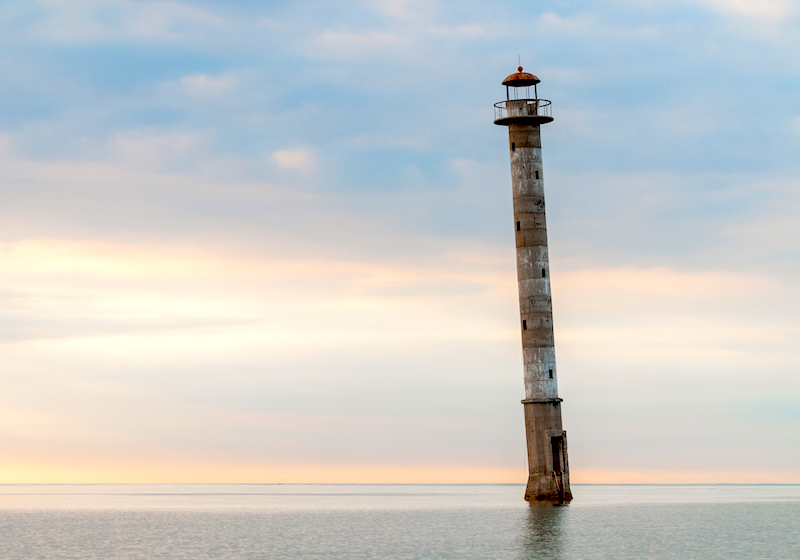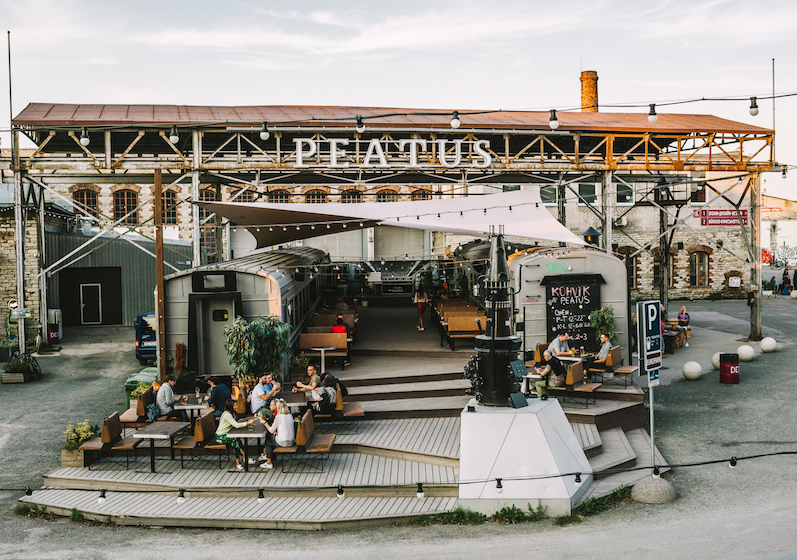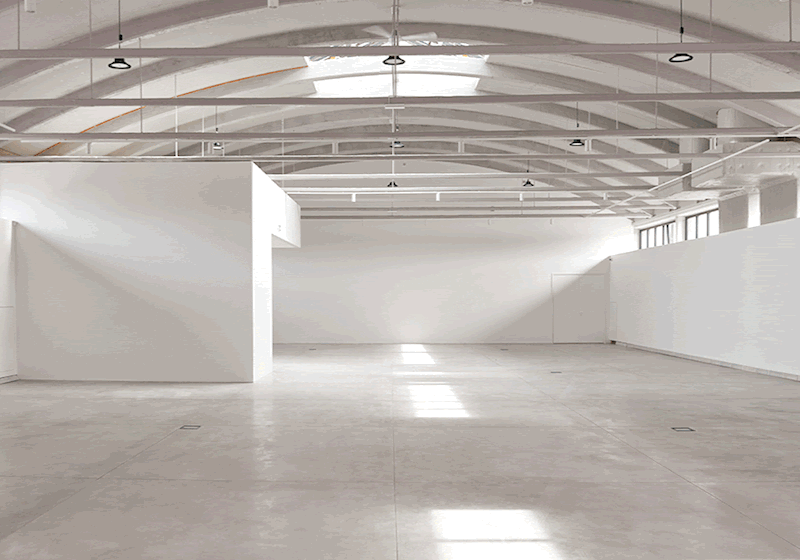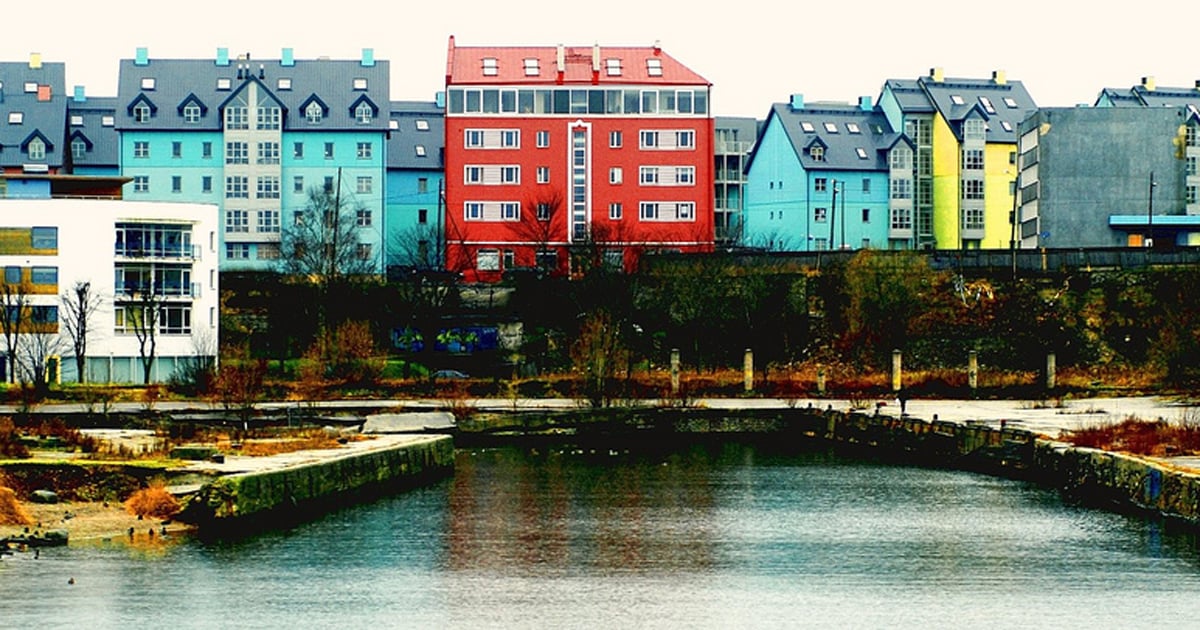Letter from Saaremaa: how a former Soviet military base is thriving as an untouched oasis for nature

Estonia’s largest island, Saaremaa, was closed off from the mainland by the Soviet army in 1946. Now, residents are rebuilding it thanks to the natural beauty that soldiers left untouched
When my husband and I arrive at Aadu Holiday Farm on the Estonian island of Saaremaa, we find it wrapped in a velvety tranquillity. A young, bespectacled man leads us to our barn chamber: one of a couple of rooms that housed crops in the beginning of the 20th century, before hosting the maids who served the former owner’s family in the summer. For the next four nights, it’s to be our home too.
The present owners — a kindly Estonian couple named Jaan and Alge Russo, who have lived on Saaremaa all their lives — bought the farm in the 1980s, when the island was still a Soviet border zone, out of bounds to anyone without a special permit. A series of faded tally marks were etched in the wooden wall in our room, like faint scars, presumably left behind by someone without a calendar, counting down the days: a total of 30.
“The farm has been around since the 1930s,” Alge tells us. “Jaan lived in the neighbouring farm as a child.”
But in 1946, the Soviet Union turned the island into a military base. Many families were torn apart, with only certain people allowed on the island. It was closed to foreigners and most mainland Estonians for over 40 years — a span of time where life retreated into a hushed and subdued existence — until 1989, when the Soviet Union collapsed.
The island is now open to outsiders once more, but scars remain. Empty military bases still loom at unexpected corners when we drive down the long roads in our rented car, in search of hiking trails. The island continues to harbour Soviet rocket bases, overgrown trenches, forlorn bunkers from the previous totalitarian system.
It’s thanks to locals like Jaan and Alge that the island is also reinventing itself, drawing from its largely untouched nature. Among pastures once ravaged by military presence, we pass bogs, wooded meadows, cliffs, tall pine trees, and sometimes a shy rabbit or timid deer, darting between the birch trees.
The island is now open to outsiders once more, but scars remain
Some farmhouses, like Aadu Holiday Farm, allow guests to stay. Others, including some formerly used as army bases, have been restored to their bucolic magnificence by harnessing what Estonians term as “pure products”: birch water, cold pressed culinary oil, juniper syrup, and sweet apple juice, made from ingredients foraged in Mother Nature’s bosom.
At Aadu, living in harmony with the earth lies in the daily necessities. Alge makes the soap that gives off a whiff of the sweet and sharp scent of birch in our bathroom. Jaan collects the honey we have every morning at the elaborate breakfast table from their bees. Some of the cucumbers, tomatoes, and apples grown on their farm end up on our breakfast table, too. The body scrubs and lip balms they have for sale are all homemade.
This kind of self-reliance is perhaps a trace of the Saaremaan people’s resilience, which has remained an enduring trait through the eras.
Traditional windmills on Saaremaa. Image: KalervoK/Wikimedia Commons under a CC licence
The home of notorious pirates, sometimes called the Eastern Vikings, Saaremaa was once the wealthiest county of ancient Estonia. In Kuressaare, the island’s capital, the local castle takes pride in a number of exhibitions which explain that even though Saaremaa was conquered by the Livonian Brothers of the Sword in the 13th century, the locals certainly didn’t let them have it easy. Perhaps it’s little wonder that island life is re-establishing itself now that the Soviet military have retreated into the shadows of the past.
The number of people visiting Saaremaa is now steadily on the rise, with those staying overnight rising by 9 per cent in 2018 compared to 2015. 35 per cent of foreign tourists, and 95 per cent of Estonian visitors, end up returning to the island after their first initial trip. In the huge autograph book placed in front of the cosy fireplace in Aadu’s communal kitchen, international visitors including from Germany, Japan, and Finland have scribbled their memories of grand adventures and sweet encounters in this remote Estonian island on the Baltic Sea over the past decade.
But it’s not just older residents re-inventing themselves that has led to Saaremaa’s revival. Now, others are also moving from the mainland: usually those who wish to embrace family life in the fresh Baltic air, rather than live out a peaceful retirement. Compared to Estonia as a whole, the island’s population is younger than the national average, with the number of pensioners considerably smaller than elsewhere. They, too, are embracing the silver lining that grew from the island’s greatest tragedy.
“One good thing that came out of the occupation was pristine, undisturbed nature, ” says Tarmo Virki, an Estonian entrepreneur and the owner of a gin distillery called Lahhentagge. He moved to Saaremaa from mainland Estonia in 2017. His great grandparents were some of the residents who were forced to leave the island — a place his ancestors had lived for at least four centuries — for the mainland in 1940. They died in the early 90s and were never able to return home.
Instead, it was Virki who came back to the island. In the mid-90s, he visited Saaremaa looking for a summerhouse for his family of three, but when the summer rolled on to autumn, winter, and spring, they realised that they were there to stay.
“Something was driving us to the island,” he continues wistfully.
Virki’s grandparents were forced to leave the island for the mainland in 1940. They died in the early 90s and were never able to return home
Virki now rents a space at an Art Deco building in downtown Kuressaare, the island’s main town, to make his award-winning gins. Pöide, a local craft brewery based in the same building, is owned by a couple who moved to the island a few years before Virki, tapping into the growing food and drinks scene.
“There was no local scene back in the 90s. Today, there are a lot of small drink makers on Saaremaa like breweries and lemonade makers,” Virki shares. His Lahhentagge gin is also sold in other countries like Germany and Sweden, while his tonics are sold in France.
“We use local juniper berries picked by ourselves, which is quite a differentiating factor compared to other gin makers,” he says. “With tonic making, we recycle Christmas trees. My wife asked the city government if we could have the big Christmas tree that graces the Kuressaare central square every year, and they happily gave it to us after Christmas. So now we have spruce tonic on the market.”
Hotel by Kuressaare Castle. Image by Dmitry Bocharov/Wikimedia Commons under a CC licence
On our last day, we wander out to the back of the farm, past a field of juniper trees looking out onto the sea.
A herd of cows are grazing in what looks like a huge patch of dense woodland sandwiched between the sea and the farm located on the tip of the Vätta Peninsula. They look so at ease; it’s as if that piece of wilderness is their self-appointed playpen, and they answer to no one, just living off the ocean air and fresh grass.
A jaunt to the desolate Kiipsaare lighthouse has us traipsing a good four to five kilometres through sandy dunes in Vilsandi National Park at the tip of northwestern Saaremaa. Besides a dead grey seal and a huge flock of birds, we find ourselves in the company of a family of four on the rugged coastline of the Harilaid Peninsula. The two children, like the cows, have thrown themselves with full abandon into the vastness, running wild and free on the rough, windswept beach.
Like many other things on Saaremaa, Kiipsaare lighthouse is bent from the weight of history, a tower gently leaning against the howling wind. Unable to resist, my husband whips out his iPhone for a potted history lesson. To our surprise, we find a connection while the waves roar at our feet. Even here, at the edge the world, the modern, future-forward Estonia has taken hold.
Coastline of the Harilaid Peninsula. Image: Hendrik Ernst
It brings to mind what Virki shared about his locally-made drinks, some macerated from lilac blossoms. “Lilac typically grows in gardens. But in spring, you can actually walk through the forests and see a lot of lilac tree blossoms. If lilacs grow in a forest, it means that there used to be a house there and people once lived there. It’s beautiful, but also rather sad.”
The people are gone, but the lilacs remain; they spread their roots in the seemingly desolate earth, flower and flourish, reborn into pure products of the present Saaremaa inhabitants.


